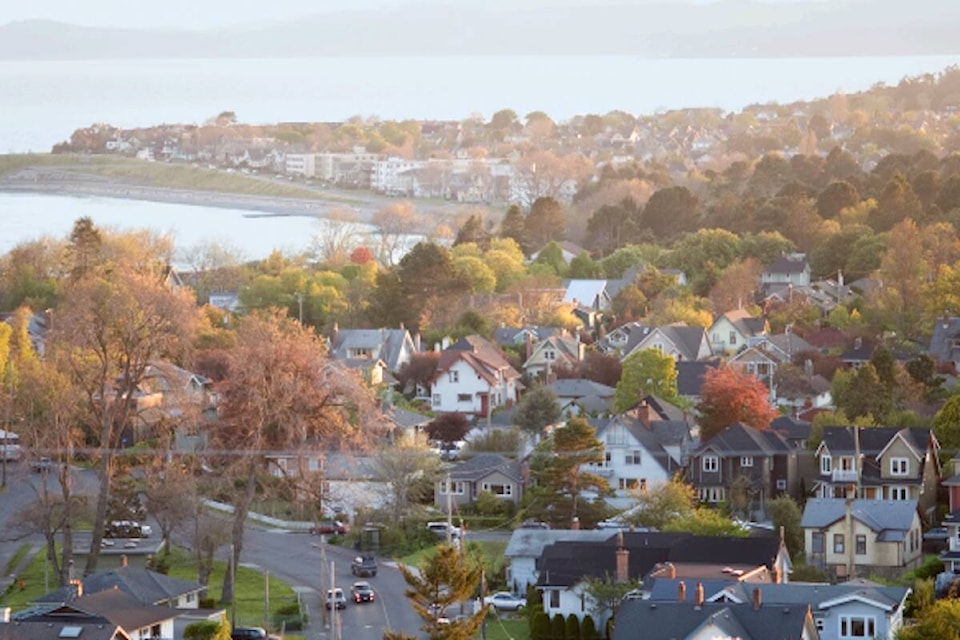A stubbornly expensive rental market, home prices increasing faster than incomes and not enough homes suitable for the families that need them bogged down Victoria’s housing situation in 2022.
The findings are among those in the City of Victoria’s annual housing strategy review.
The city last year slightly exceeded its annual target of 1,000 permits across all housing types, reached its 2025 target for building new condo units and approved more market rentals than its yearly goal.
Staff also highlighted 2022 policy moves like finalizing the rapid deployment of the affordable housing process – which axes public hearings for certain projects – and wrapping up work on the missing middle housing initiative. The latter aims to make it easier to build smaller multi-family buildings in all areas where zoning only allowed single-family homes.
“Despite this progress, affordability continues to pose the biggest challenge to living in Victoria, particularly for renter households who increasingly cannot afford to move elsewhere in the city,” staff told council on July 6.
The city in 2022 missed its annual approval targets for family friendly housing and missing middle-style homes, marking the third straight year the capital has fallen short in those arenas. There have been zero missing middle initiative applications since it was adopted in March and Mayor Marianne Alto said in May the initiative will likely see tweaks at its six-month check-in this September.
Missing middle options made up under seven per cent of all permits issued in 2022 – accounting for just half of the housing type’s annual target – and the city would have to approve 490 units in 2023 to get back on track. Council approved less than 60 per cent of its 2022 goal when it came to family friendly homes.
The housing review found those with high access to capital, like Real Estate Investment Trusts (REITs), have a strong interest in consolidating ownership of Victoria’s existing rental market.
“With such high purchase prices, there is a need for corporate owners to recover their investment for shareholders through higher rents. This ongoing trend may accelerate the erosion of affordability in Victoria’s rental housing market in the coming years, particularly where older, more affordable rental buildings are acquired,” the annual review states.
Council in recent weeks renewed its call for the province to crack down on rents being jacked up between tenancies. The annual review identified a widening gap in the affordability of occupied and vacant rentals when compared to the income of those tenants.
In 2022, the median Victoria renter made $4,633 a month and would need their monthly income to be $5,687 to afford an average occupied two-bedroom. The same renter would need to make $7,457 a month to afford an average vacant two-bedroom.
The city said average home prices have risen by about 70 per cent since 2016 while incomes have only increased by 14 per cent in the same period. Average sale prices for single-family dwellings, condos and townhouses all shot up last year. Single-family homes saw the smallest one-year jump among that group, rising by nine per cent to $1,354,921 in 2022, but have increased in cost by 117 per cent over the last decade.
The number of households on the waitlist for subsidized housing grew by nine per cent last year, reaching 1,146 in December 2022.
There were 293 net new non-market units approved in 2022, meaning council failed to hit the annual target of 350. That permitted amount is fewer than the non-market units approved in the two previous years and shows progress on affordable rentals is slowing, the annual review said.
READ: Greater Victoria mayors welcome being subject to new housing supply targets
READ: Victoria housing review finds stark shortage in family spaces being approved



